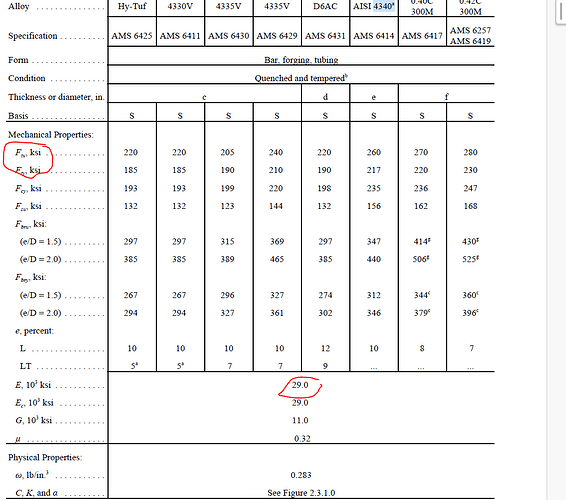#1 Any metal specimen that undergoes plastic deformation permanently changes shape. Chassis do bend, but they are not designed to bend. It is a unfortunate side effect of usage. At the top levels, when a chassis bends (changes shape) it goes on the scrap heap (ie…gets sold off…). The whole idea that a chassis is designed to operate in the plastic region is nonsense. If that were true, the mfgs would be selling us all sorts of jigs and fixtures to continuously re-bend our chassis…
#2 Hardness and flex (modulus) are not the same. Hardness (ie the stress level that causes yield) does change with heat treatment. Flex (the modulus of elasticity) does not. If you can prove otherwise, you should be in for all sorts of academic prizes as your discovery will be counter to 100+ years of Engineering and Industry data and experience. Anyone who convinces themselves about stiffness as a function of heat treatment is falling victim to a placebo effect.
#3 The only reason you would heat treat a chassis is to stress relieve the HAZ (heat effected zone) near a weld.
#4 Wall thickness and heat treatment are completely independent of each other.
#5 Proper heat treatment that yields controllable results is quite EXPENSIVE. You have to heat the part with a specified time gradient. Hold for a certain period of time. Quench (cool much more rapidly), which “locks in” the microstructure. This will create a “dead hard”, or max hard condition. How hard the dead hard condition is depends on how much carbon you have in the steel. You then perform ANOTHER heat treatment process called tempering, which takes the edge off the dead hard condition, and makes things less brittle / more ductile and less prone to fatigue. The higher the tempering temperature, the more you increase ductility and toughness while lowering hardness/strength. When you look at the data sheet for a alloy steel suitable for heat treatment, they will include a tempering curve, which shows what tempering temperatures give what hardness. Where you run into issues with 4130 is rapid localized cooling in the HAZ that can create hardness gradients. This can lead to cracks. Based on the cost of a kart chassis, I would conclude that NOT A SINGLE mfg is heat treating their chassis in a manner that gives controllable results. If they were, chassis would cost a LOT more. At most, they are doing a localized temper / anneal (heat up with a OA torch to just under critical temperature, and slow cool) to temper the weld area and reduce hard spots, etc.
#6 Most 30mm chassis tubes are 2.0mm wall. I personally think this is too large and thin, which makes it prone to bending. This reality is probably what leads CK to make his statements about chassis bending. You can actually build a frame from different diameter tube, with a different wall…and achieve THE SAME bending stiffness, but there is a compromise. The basic beam constant is “EI” where “E” is the modulus of elasticity (200-215 Gigapascals for Steel), which we can not change…no matter what anyone claims…and the “I”, which is the Area Moment of Inertia, which we can change. Any and all beam equations contain this “EI” term. If you go to the Engineer’s Edge website, they have a calculator for the Area Moment of Inertia Tube/Pipe Calculator. What you will find, if you plug in some numbers, is that commercially available (in the US) 1.125" x .095" wall tubing has an “I” that calculates to 97.5% of that of 30mm x 2.0 mm ( 1.181" x .078" wall). In other words, you can trade diameter for wall thickness, and get about the same bending stiffness. But there is that compromise I noted previously. That is weight. The smaller thicker tube will weigh more per foot. But here is where it gets interesting. If you actually do a stress analysis (Shigleys Formulas for Stress and Strain), or FEA analysis of the two different sizes, you will find the smaller, thicker, heavier tube can take more load, and be displaced further, for a given bending moment. In other words, if you can afford the weight, going to a smaller diameter but thicker wall will give you a chassis that is more like to hold up over time (not bend) while exhibiting the same flex. So, what you get for your extra weight is “toughness” in a chassis.
#7 If I were mfg kart chassis…I would specify a hotwire TIG process, such as EWMs “TigSpeed”
using the oscillating wire feed. This allows you to put a lot less heat into the weld. It is also very easy to adapt to robotic control. The oscillating hotwire process was created by a Swiss Company called TipTig about 20 years ago, but they never made anything of it because they refused to license the technology and wanted to “do it themselves”. Typical Swiss. The patents appear to have run out, and other mfgs are now incorporating into their high end tig wire feeders.
That is enough Engineering and Mfg tech for today…
